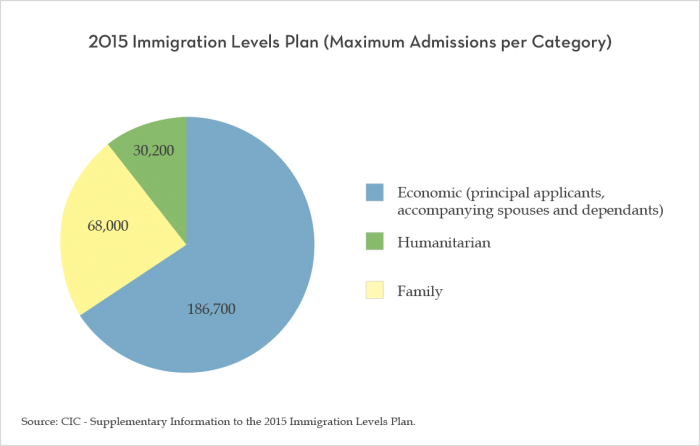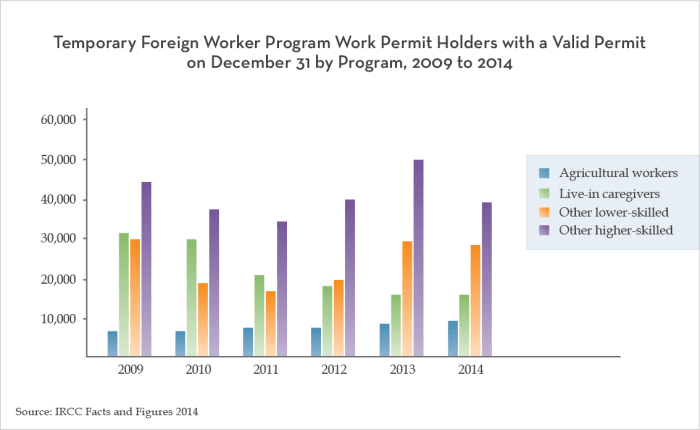
Table of Contents
- Public policies block small companies from becoming bigger
- Canada is vulnerable to cyber crime
- Canada’s trade agenda — new agreements are just the start
- Canadian resources cannot get to world markets
- Poor literacy, numeracy and digital skills are limiting productivity in segments of Canada’s workforce
- Canada needs a more aggressive and effective innovation strategy
- Canada is not ready for climate change
- Internal barriers to trade cost Canadians billions and restrict investment
- Lack of clarity regarding businesses’ responsibilities to Aboriginal peoples constrains investment
- Canada’s brand does not support business competitiveness
INTRODUCTION
In what has become an annual tradition, the Canadian Chamber of Commerce is presenting its list of the Top 10 Barriers to Competitiveness in 2016. The concept behind the Top 10 is simple: in a fiercely competitive world, business needs more than its own skills to win — it also needs supportive public policies. Our annual list of barriers points to economic hurdles of our own making, self-imposed limits on the growth of Canadian businesses.
This year’s edition includes many familiar topics, from internal trade barriers between provinces to the lack of clarity concerning consultations with Aboriginal peoples to the fact that we cannot efficiently get resources to world markets. This year, some new topics have emerged that deserve our attention. Canada’s vulnerability to cyber crime and its lack of preparedness for the effects of climate change are some good examples.
As you read through this report, I encourage you to keep in mind that these obstacles to success are the result of our own actions or our own failure to act. That means we are capable of eliminating these barriers. We just have to recognize how critical it is to be competitive and take the steps needed to improve our national performance.
By working together, we can give our businesses the tools they need to compete on the global stage, unhindered by unnecessary hurdles. Let’s make this the starting point to building a more competitive Canada — a Canada that wins.

Hon. Perrin Beatty
President and CEO
SUMMARY
1. Public policies block small companies from becoming bigger
Canada has tax barriers and policies in place that keep its small businesses from growing into big businesses with more resources to hire, invest and innovate. Big firms are more productive, which is essential to the competitiveness of the Canadian economy. Yet, only 1.4% of mid-sized Canadian firms become big businesses. To grow Canada’s companies, the government needs to change the corporate tax rates and breaks that penalize growth.
2. Canada is vulnerable to cyber crime
Canada loses $3.12 billion to cyber crime per year, and nearly half of all small businesses have been the victim of a cyber attack because they are less equipped to handle attacks. The government has a role to in play in ensuring small businesses get help with their digital literacy and cyber resilience.
3. Canada’s trade agenda — new agreements are just the start
Canada has been aggressive in pursuing new trade agreements over the past few years but its businesses continue to face substantial barriers expanding abroad, and Canadian exporters are falling behind in key markets like China. Canada needs to help businesses scale up internationally. Canada also needs to ratify the Trans-Pacific Partnership and the Comprehensive Economic and Trade Agreement with the European Union, get new deals done with China and India, and cooperate on regulations with its trade partners.
4. Canadian resources cannot get to world markets
Canada’s trade and foreign investment flows depend on natural resources and its future economic prosperity depends upon its ability to provide reliable infrastructure to allow Canadian energy resources to fuel Asian economic growth at world market prices. Yet, Canadian energy products are exported nearly exclusively to the United States because Canada lacks the infrastructure to get these products to markets abroad. Governments need to support pipelines and other infrastructure that will allow Canadians to trade with the world.
5. Poor literacy, numeracy and digital skills are limiting productivity in segments of Canada’s workforce
Robotics and artificial intelligence are changing the workplace and increasing the demand for high-skilled workers. Yet, half of Canadians do not have the levels of literacy, numeracy and digital problem solving skills they need to compete in today’s economy. Canada needs a plan to make sure people have the skills for tomorrow’s jobs.
6. Canada needs a more aggressive and effective innovation strategy
Public and private sector R&D spending is vital for exports, jobs and wealth creation. Yet, federal R&D expenditures as a proportion of GDP have fallen by a quarter in just five years. Canada needs to reinvest in an innovation ecosystem that supports the capability of business to rapidly respond to change.
7. Canada is not ready for climate change
Climate change affects all Canadian industries, from agriculture and natural resources to tourism and defence. As nations advance policies and regulations to combat greenhouse gas emissions, Canada must keep pace to maintain its competitiveness as a location for investment and a source of products. Canada needs clear federal policy on carbon regulation and a climate adaptation strategy.
8. Internal barriers to trade cost Canadians billions and restrict investment
The Canadian economy remains divided by artificial barriers to trade and labour mobility that frustrate business investment and cost consumers billions of dollars every year. To get free trade within Canada, the federal government should apply pressure on the provinces and expand the right of private parties to seek redress.
9. Lack of clarity regarding businesses’ responsibilities to Aboriginal peoples constrains investment
In the cut and thrust of global competition, Canada can no longer afford for its governments, businesses and Aboriginal peoples to work at cross-purposes. Canada needs meaningful reconciliation with its Aboriginal peoples; however, it is not clear to businesses what reconciliation means and what they need to do to do their part in achieving it. The federal government, as the primary interlocutor between Aboriginal peoples and other constituencies, needs to lead the way.
10. Canada’s brand does not support business competitiveness
The world sees Canada as a great place to live but not to do business, and Canada has not been doing a good job at changing those perceptions. A strong business brand would encourage foreign direct investment in Canada, increase awareness of Canadian export products and support Canada’s tourism industry. The government must increase its efforts to improve its business brand through tourism and investment promotion.
1. Public policies block small companies from becoming bigger
 Canada’s 1.2 million small- and medium-sized enterprises (SMEs) are the backbone of its economy; they are critical to innovation and entrepreneurship, while employing nearly 70% of the Canadian workforce.
Canada’s 1.2 million small- and medium-sized enterprises (SMEs) are the backbone of its economy; they are critical to innovation and entrepreneurship, while employing nearly 70% of the Canadian workforce.
The best thing that can happen to a small business is to grow into a big business with more resources to hire, invest and innovate. A report by Baldwin and Jarmin shows that small Canadian manufacturing firms were just 46% as productive as large firms (this gap is greatest within the manufacturing sector), but productivity rises with size across most industries as companies benefit from economies of scale and increased capital investment. This report also suggests that roughly 19% of the productivity gap between Canada and the United States is because American firms tend to be so much larger.
Of deepest concern are Canada’s medium-sized firms, which represent 12% of its GDP and 18% of total export values.1 A 2013 BDC study2 identified some concerning trends, including a 17% decline in the number of Canadian mid-sized firms from 2006 to 2010. Over the same period, an average of 14% of mid-sized firms either shrank into small firms or ceased operations each year, while just 1.4% grew into large companies with more than 500 employees.
In a competitive environment, we need our small businesses to grow into big businesses. So why do we have tax barriers and policies that keep our small businesses from growing?
The tax barriers that encourage companies to remain small are:
- Corporate tax rates: Companies are penalized when their incomes reach $500,000. They must jump from the 11% small business rate to the 15% corporate rate. Add in provincial tax rates, and the jump is from 15% to 27%.
- The cost and complexity of complying with Canada’s tax laws: This is a huge, time-consuming hindrance to businesses. Mid-sized business leaders responding to a 2014 survey by QuantumShift3 frequently cited the Canada Revenue Agency (CRA) review and audit process as creating considerable complexity and cost for companies, both to achieve tax compliance and to challenge or appeal agency decisions. For SMEs, dealing with the CRA can be a complicated process and many are required to make more than 30 remittances a year (GST/HST, payroll taxes and income taxes). SMEs that make errors are faced with unforgiving penalties of the same proportions as large businesses and an appeal process that is complicated and costly.
- Certain tax breaks that only help SMEs: The federal Scientific Research and Experimental Development (SR&ED) program provides a 35% credit for the first $3 million in expenditures for small firms but only a 15% credit for expenditures exceeding $3 million.
- Inheritance taxes that hurt family businesses: Canada’s tax system treats the transfer of family-owned businesses in farming and fishing favourably but not in other sectors where family members face capital gains taxes. This can discourage the transfer of family-owned businesses to the next generation where they can remain profitable and continue to provide employment.
- The small business deduction: The taxable capital threshold has remained at $10 million, which disadvantages larger, highly-leveraged firms.
The way forward
The Canadian Chamber of Commerce will advocate that the federal government:
- Review relevant policies and programs that serve as a constraint to the growth of SMEs
- Overhaul legislation and regulations to remove these barriers
2. Canada is vulnerable to cyber crime
 The digital marketplace is growing exponentially faster than the other sectors of the economy. The global internet economy is estimated to be valued at $4.2 trillion in 2015.4 Canada’s internet economy now accounts for 3.6%5 of its GDP (without accounting for the value of the data itself). Data that can be used for identity theft has a black market value — from $1 for a credit card number to $10 for health information.6 Cyber crime can also help thieves gain competitive advantage and compromise national security.
The digital marketplace is growing exponentially faster than the other sectors of the economy. The global internet economy is estimated to be valued at $4.2 trillion in 2015.4 Canada’s internet economy now accounts for 3.6%5 of its GDP (without accounting for the value of the data itself). Data that can be used for identity theft has a black market value — from $1 for a credit card number to $10 for health information.6 Cyber crime can also help thieves gain competitive advantage and compromise national security.
The risks posed by cyber theft are hindering Canada’s ability to compete globally. Denial of service attacks (botnets) are becoming more frequent as the cost of acquiring customized software to conduct these attacks is just a few hundred dollars. Yet the consequences can cost businesses, citizens and governments millions or even billions of dollars. Cyber crime extracts 15-20% of the $3 trillion global internet economy. Canada loses 0.17% of GDP ($3.12 billion) to cyber crime per year.7
In Canada, the Ponemon Institute surveyed 21 companies across all sectors for IBM and found the following:8
- The average cost of a data breach is $5.12 million.
- The average cost per record of a breach is $250.
- On average, 20,459 records were breached in 2015.
The numbers for small and medium business (98% of Canada’s private economy) are particularly alarming. According to StaySafeOnline.org, 71% of data breaches happen to small businesses, and nearly half of all small businesses have been the victim of a cyber attack. Visa Inc. reports that 95% of the credit card breaches it discovers are from its smallest business customers.9
Cyber criminals are attracted to small businesses for three reasons:
- Due to a lack of resources, small businesses are less equipped to handle an attack.
- The information hackers want — credit card credentials, intellectual property, personally identifiable information — is often not as well protected as in larger organizations.
- Small businesses’ partnerships with larger businesses can provide back-channel access to a hacker’s true targets (i.e., those larger businesses).
The most obvious impacts of cyber crime are the direct costs to business, including financial, data recovery, customer confidence, reputation, infrastructure, training and monitoring. There is also the added potential cost of a conviction for a PIPEDA compliance failure (up to $100,000 per record). There are societal costs as well, which can be more complicated to value and include higher prices, damage to critical infrastructure and breaches of national security.
The way forward
The Canadian Chamber of Commerce will advocate that the federal government:
- Play an important role in promoting digital literacy
- Provide leadership (in partnership with the business community) by establishing best practices for cyber resilience
- Contribute to building the trust of the business community by effectively punishing cyber criminals
3. Canada’s trade agenda — new agreements are just the start
 Canada has been aggressive in pursuing new trade agreements over the past few years (highlighted recently with the signing of the Trans-Pacific Partnership and the Comprehensive Economic Partnership Agreement with the European Union) but its businesses continue to face substantial barriers expanding abroad. Canadian exports fell by another 7% in 2014-2015. Though much of this is because of the fall in oil prices, it follows an already lackluster decade where trade and investment growth and diversification stagnated — all at a cost to economic growth and employment in Canada.
Canada has been aggressive in pursuing new trade agreements over the past few years (highlighted recently with the signing of the Trans-Pacific Partnership and the Comprehensive Economic Partnership Agreement with the European Union) but its businesses continue to face substantial barriers expanding abroad. Canadian exports fell by another 7% in 2014-2015. Though much of this is because of the fall in oil prices, it follows an already lackluster decade where trade and investment growth and diversification stagnated — all at a cost to economic growth and employment in Canada.
Trade agreements are important but they alone are not enough to expand trade and generate economic growth for Canada. Tariff and non-tariff trade barriers persist for Canadian companies while the benefits of the trade deals Canada needs to help achieve freer and fair trade, such as TPP and CETA, will take a long time to have an impact.
In the meantime, Canada must be more strategic in supporting its trade in highly sophisticated and competitive world markets, especially for new high-value services. Canada must help growing businesses scale up internationally. It must do more to engage in influencing international standards and it must ensure trade commissioners and other support remains highly competitive — they are often the key “difference makers” for Canadian firms seeking to break into new markets.
In North America, customs and border administration continues to be focused on security with little attention to facilitating the development of global supply chains. Talks with India have stagnated, and Canada is falling further behind in its relations with China, its second-largest export market and where Australia now has an agreement granting it preferential access. Canada’s exports of agri-food, forestry products and services are ever more vulnerable to regulatory barriers that are not addressed by its free trade agreements. In addition, the growth of international data flow restrictions can threaten newer forms of high-value trade that relies on cloud computing and e-commerce services, which are especially important for small- and medium-sized businesses.
The challenges and risks of operating globally are growing. Canada’s trade sanctions and export controls are in flux because of geopolitical developments, and efforts to combat corruption and bad corporate behaviour are not always coordinated or adapted to the realities of international business, which can put Canadian firms at a disadvantage.
Canada needs to follow through on its trade priorities and address the next wave of challenges.
The way forward
The Canadian Chamber of Commerce will advocate that the federal government:
- Ratify and implement the Trans-Pacific Partnership and Comprehensive Economic Partnership Agreement with the European Union
- Engage with Canadian businesses to develop more comprehensive, fair and strategic international trade strategies that accelerate economic growth for Canada
- Expand trade and investment promotion services, increase engagement on international standards and establish a national development finance institution that helps Canadian businesses deploy technology and capital in emerging markets
- Conduct exploratory talks on new trade initiatives with China and the Philippines
- Implement a clear strategy to conclude foreign investment protection and free trade negotiations with India
- Launch a new international regulatory cooperation strategy that builds on the Canada-U.S. Regulatory Cooperation Council and creates alignment with other trading partners
- Ensure Canada’s economic sanctions stay aligned with the European Union and the United States
- Encourage transparent and responsible business practices abroad by recognizing companies that implement internal controls and helping them adopt voluntary standards
4. Canadian resources cannot get to world markets
 Diversified markets are critical for the efficient function of a national economy. Canada is the G8 nation whose economy is tied most tightly to trade with other nations, yet Canada sends virtually all of its petroleum energy resources to a single market where demand is falling sharply. Canada’s future economic prosperity depends upon its ability to provide reliable infrastructure to allow Canadian energy resources to fuel Asian economic growth at world market prices.
Diversified markets are critical for the efficient function of a national economy. Canada is the G8 nation whose economy is tied most tightly to trade with other nations, yet Canada sends virtually all of its petroleum energy resources to a single market where demand is falling sharply. Canada’s future economic prosperity depends upon its ability to provide reliable infrastructure to allow Canadian energy resources to fuel Asian economic growth at world market prices.
Global demand for Canadian energy resources is increasing, particularly in the Asia-Pacific region, yet Canadian energy products have limited access to markets abroad and are exported nearly exclusively to the United States. Overseas markets will be of critical economic importance to Canada in the 21st century. Not only do they represent the major source of growth for this sector, they are also the key Canadian asset sought by trade partners in Asia and other developing markets.
Canada’s energy strategies are a key diplomatic tool in trade negotiations, like bilateral negotiations with India and China. While the U.S. will remain an important export market, diversified export options would secure higher prices for Canada’s resources.
Supplying these growing markets will require new infrastructure to get the resources to market.
Since the end of 2010, new shale oil developments in the United States have exerted downward pressure on prices for North American crude and have created a gap between the prices Canadian oil earns in the United States and the world prices buyers (including eastern Canadians) pay to import oil from other sources. In 2012, CIBC estimated this gap cost the Canadian economy approximately $19 billion — more than $50 million per day.
With world oil prices declining as a result of huge new supplies of domestic energy, the gap between what Canada earns selling its oil and what it pays to import refined products is substantial.
Canada’s provinces and two of its territories hold constitutional authority over the natural resources that lie within their jurisdictions. This reality complicates the national discussion surrounding Canada’s energy export strategies. Rather than argue over the division of the jobs and revenues created by the existing situation, the federal, provincial and territorial governments need to consider options to diversify the distribution of Canada’s energy assets and should work together to develop and sign an energy strategy to secure Canada’s status as a world leader in energy production and transportation. The federal government needs to better educate the Canadian public about energy flows within the country and the broader economic implications of exporting Canadian energy resources to only one customer. Moreover, it should seek partnerships to establish a common fact base surrounding the options for market diversification so project risks can be properly and transparently evaluated.
Industry, for its part, will need to demonstrate to the Canadian public how resource developments can be undertaken in an environmentally responsible manner. Energy companies operating in Canada are held to higher environmental standards than those in much of the rest of the world and are prepared to adopt world-leading controls on their operations. This is a fact that is not generally understood in Canada and internationally.
Environmental concerns are legitimate and are increasingly urgent. Industry and government must continue to address them and expand their efforts to do so. Without progress on this issue of “social licence,” it is unlikely Canada will transition effectively from a continental supplier to a world supplier.
The way forward
The Canadian Chamber of Commerce will advocate that the federal government:
- Increase its engagement with the Canadian public to address the economic opportunities associated with energy market diversification
- Enhance outreach to communicate the technological advancements and safety improvements in the pipeline and maritime sectors
- Invest and develop key energy infrastructure, including the exploration of all responsible options to enable tidewater access for Canadian energy resources
- Use appropriate levers to facilitate west-east oil trade flows within Canada
5. Poor literacy, numeracy and digital skills are limiting productivity in segments of Canada’s workforce
 Many Canadian workers lack adequate reading, math and digital skills, making them vulnerable to sweeping changes as robotics and artificial intelligence alter the workplace. For employers, huge opportunities to enhance productivity with technology will be a competitive advantage, but only if they can find skilled employees. Consequently, investors will have no incentive to invest in a country whose workers cannot compete.
Many Canadian workers lack adequate reading, math and digital skills, making them vulnerable to sweeping changes as robotics and artificial intelligence alter the workplace. For employers, huge opportunities to enhance productivity with technology will be a competitive advantage, but only if they can find skilled employees. Consequently, investors will have no incentive to invest in a country whose workers cannot compete.
Roughly half of the Canadian population is below the minimum desired levels of literacy and numeracy, according to the OECD’s 2013 survey of adult skills. Only half of the Canadian population has problem-solving skills at the basic level in a digital environment. Many Canadians cannot interpret graphs or fully understand instruction manuals, for example.
Worse still, a substantial portion of working-age adults scored near the bottom in assessments of literacy, numeracy and digital skills, as noted in a recent 2015 study by the IRPP. This reduces employees’ productivity on the job and leaves them ill-equipped to cope in an increasingly technology-rich environment.
Employers face a double-edged sword. On the one hand, they continue to cite access to a skilled workforce as their top barrier to doing business in cities across Canada (where chambers of commerce survey their members). On the other hand, existing workers may lack the opportunities or incentives to improve their literacy, numeracy or digital skills. As the IRPP study notes, “In a country with a population as highly educated as Canada’s, an above-average share of the workforce remains underskilled, underqualified or in need of a new career path. It is time for this to change.”
Indeed, the employment landscape is changing, and the demand for high-skilled workers is growing (up 19% since 1998, according to Statistics Canada) while the need for low-skilled workers is declining (down 11% over the same period). Digital and STEM (science, technology, engineering and math) skills, which are critical to a workplace with more robots, data and artificial intelligence, can only be acquired if the fundamentals are in place.
Improved literacy and essential skills can be the answer to better productivity and economic growth. Investing in these skills through workplace training and lifelong learning opportunities makes sound economic and social sense and may be key to ensuring Canadians thrive in an evolving and more digitized workplace.
The way forward
The Canadian Chamber of Commerce will advocate that the federal government:
- Increase its leadership and funding of programs to improve the literacy, numeracy and digital skills of working-age Canadians with those skills shortfalls
6. Canada needs a more aggressive and effective innovation strategy
 Innovation, invention, disruption and the creation of intellectual property and higher-value products and services are the essential ingredients that will drive future economic prosperity across Canada’s business sectors. And yet, despite countless studies, reports and recommendations, Canadian business continues to be challenged on productivity, an essential measure of Canada’s ability to compete with both advanced and emerging markets.
Innovation, invention, disruption and the creation of intellectual property and higher-value products and services are the essential ingredients that will drive future economic prosperity across Canada’s business sectors. And yet, despite countless studies, reports and recommendations, Canadian business continues to be challenged on productivity, an essential measure of Canada’s ability to compete with both advanced and emerging markets.
Canada’s public sector research is world leading but it fails to commercialize it. While Canada’s capacity to generate new ideas is competitive, its record of developing intellectual property into financial success stories trails its major trading partners. Fostering an “ideas economy-friendly” environment where ideas are protected and nurtured is essential. Canada has also yet to systematically adopt effective new partnering models that can accelerate the growth of Canadian start-ups into competitive global enterprises and take greater advantage of global supply chains to drive scale. This must change. Canada must transform.
Most of Canada’s current incentive programs are hang-overs from an earlier time. Its program investments in R&D and technology, such as IRAP, SR&ED, the Automotive Innovation Fund and various NRCan Cleantech funds, focus on product outcomes. The purchase of new technologically-advanced equipment is encouraged (or at least made easier) through an extension of the Accelerated Capital Cost Allowance. Incentives are provided to offset more competitive costing in other jurisdictions.
However, Canada’s focus should not be limited to product outcomes. Canada must also compete by generating intellectual property and engineering its future.
The ability of Canadian companies to compete globally is now being determined by their ability to innovate, adapt or disrupt old business models. Building on its leadership in traditional sectors, Canada must now generate economic growth through breakthrough ideas, processes and services. Government, academic and research institutions can be much more effective partners in this process if new Canadian companies are to grow and succeed in the new international marketplace. Streamlining the intellectual property framework between institutions is the first step.
As an example, Germany’s Siemens is committed to what it and the German government call Industrie 4.0, or the fourth industrial revolution based on the use of cyber-physical systems.
The goal is to develop (by working with manufacturers) “digital enterprises” that can adapt to market conditions and use resources efficiently. That means using technology to integrate product and production lifecycle processes. Siemens envisions a future where “engineers who plan a new product, such as a new switchgear, will use special software to simultaneously design its manufacturing process, including all associated mechanical, electronic and automation systems.”
In Canada, many of its businesses and public institutions have failed to invest or partner in innovation at the rate required to drive success. Since 2010, federal R&D expenditures have fallen by 12% (after inflation, the drop is closer to 18%). If economic forecasts are borne out, federal R&D expenditures as a proportion of GDP will have fallen 26% in just 5 years.10 Both public and private sector R&D spending is vital for exports, jobs and wealth creation. There are 28 companies in Canada that spend more than $100 million a year on R&D: 12 (five of the top 10) are in the manufacturing sector.
Manufacturing remains the nation’s largest source of commercial innovation — key to trade deficit reduction — and a disproportionately large contributor to environmental sustainability. Manufacturing adds close to $170 billion to its GDP and supplies 1.7 million jobs. But, even with a low Canadian dollar, this sector now struggles to keep pace with global trends toward lower-cost jurisdictions. Manufacturing GDP declined by 14% between 2000 and 2013 while the economy grew by 37% overall, according to a recent study by the Lawrence National Centre for Policy and Management.
Canada will need to quickly embrace a new balance of more advanced manufacturing and a much sharper focus on expanding its capacity and strength in the innovative design, engineering and technology services that create value in the new economy. While reinforcing its strength in STEM education and skills, Canada needs to foster a new innovation ecosystem that not only generates high-quality products but also competes on services like engineering, software, networking and distribution.
These changes apply equally to more traditional resource sectors. Innovation is also driving the competitiveness of Canada’s global financial services companies. Many of the world’s most innovative and successful companies now drive value through more intangible high-value services and technologies that leverage cloud computing and analytics. Canada has the skills and global supply chain partnerships to grow its economy in all these critical fields. But it needs purposeful change to succeed.
The way forward
The Canadian Chamber of Commerce will advocate and work with the federal government to foster a more innovative economy through:
- The creation of a focused strategy to bring innovative, technology-based Canadian startups to competitive scale
- Fostering improved partnership models between business, government, universities and public research institutions
- Leveraging R&D investments by improving the integration into the innovation ecosystem of companies and institutions that focus on the commercial application of intellectual property
- Streamlining institutional intellectual property frameworks
- More effective tax or grant strategies to foster R&D for both processes and products
- New strategies to foster Canadian patent generation and internationally competitive pools of Canadian intellectual property
7. Canada is not ready for climate change
 Strategies to address climate change will have critically important implications for our environment, society and economic future. As world economies adopt strategies that place a value or carbon, there will be both challenges and opportunities for Canada. Governments must partner with businesses to optimize technological and economic opportunity while avoiding uncertainty or unintended consequences.
Strategies to address climate change will have critically important implications for our environment, society and economic future. As world economies adopt strategies that place a value or carbon, there will be both challenges and opportunities for Canada. Governments must partner with businesses to optimize technological and economic opportunity while avoiding uncertainty or unintended consequences.
As a northern country with strong cultural and economic ties to its natural environment, Canada will be particularly affected by the impacts of climate change. Changing weather patterns will also increasingly affect industries across the nation, from agriculture and natural resources to tourism and defence. The federal government must develop and implement clear policies on greenhouse gas emissions (GHGs) as well as effective adaptation strategies that defend Canada’s future international economic competitiveness.
The impacts of climate change will be increasingly challenging for industries across Canada. Changing weather patterns will lead to regional water supply difficulties for agriculture, natural resource industries and local communities. Infrastructure will be threatened in the North from melting permafrost and on the coast due to rising sea levels. Conversely, climate change will pose economic opportunities, such as increased shipping in the North and more cost effective access to natural resources in the Arctic.
As nations advance policies and regulations to combat GHGs, Canada must keep pace to maintain its competitiveness as a location for investment and a source of products. Canada is already taking this issue seriously, with some provinces implementing GHG mitigation policies, such as cap and trade systems and taxes, while some businesses are implementing shadow carbon pricing into their financial plans. Furthermore, major energy companies are calling on the federal government to lay out a plan for GHG regulation so they can make investment decisions with more certainty. A lack of a plan is discouraging investment in the Canadian economy and harming businesses’ competitiveness and ability to create jobs. A clear federal policy on GHGs will also advance social licence domestically for Canada’s natural resource industries, including critically needed energy infrastructure projects.
In order to maintai n industry competiveness, the federal government must develop and implement effective adaptation and mitigation strategies now or face much higher costs to adapt in the future.
The way forward
During 2016, the Canadian Chamber of Commerce will examine the anticipated impacts of climate change more deeply and develop more specific recommendations for the federal government moving forward.
The Canadian Chamber of Commerce will advocate that the federal government:
- Consult carefully with businesses on technological and economic responses to climate change
- Adopt a clear federal policy on carbon regulation
- Conceive climate change adaptation strategies that will take into account business priorities
8. Internal barriers to trade cost Canadians billions and restrict investment
 The Canadian economy remains divided by artificial barriers to trade and labour mobility that frustrate business investment and cost consumers billions of dollars every year.
The Canadian economy remains divided by artificial barriers to trade and labour mobility that frustrate business investment and cost consumers billions of dollars every year.
Highly competitive national economies are characterized by speed and flexibility. The free flow of people, goods and services throughout the country allows competition and high levels of service while helping to address skilled labour shortages. Unfortunately, the patchwork system of regulations within Canada significantly hinders its productivity and competitiveness.
The Agreement on Internal Trade (AIT) was designed to reduce and eliminate internal barriers to trade, investment and labour mobility in Canada. It is supposed to provide overarching rules designed to restrict the creation of new interprovincial/territorial trade barriers. It also contains a mechanism to reduce existing barriers in the specific economic areas covered by the agreement.
The AIT has been updated numerous times over its 20-year history, yet, significant challenges still remain. In 2014, the Council of the Federation committed to the renegotiation of the AIT, but little has been accomplished. In order to be effective, any new internal trade regime must be as ambitious and comprehensive as Canada’s international trade agreements. The business community must keep up the pressure to ensure all levels of Canadian government remain committed to the removal of the remaining barriers to trade.
The way forward
The Canadian Chamber of Commerce will advocate that the federal government:
- Take a leadership role in moving this barrier forward through pro-liberalization pressures in procurement, regulation and direct negotiation with the provinces/territories
- Promote stakeholder engagement throughout AIT negotiations, which is essential to
ensuring political considerations do not frustrate the movement towards liberalization - Expand the right of private parties to seek redress in court; the market is the only force capable of driving reform
9. Lack of clarity regarding businesses’ responsibilities to Aboriginal peoples constrains investment
 The Canadian Chamber of Commerce is exploring the issue of the duty to consult Aboriginal peoples whose constitutionally-protected rights could be adversely affected as a result of governments approving private sector projects on, through or near their lands/territories. However, the duty to consult is but one of the relationships amongst government, Aboriginal peoples and businesses that lacks clarity. Others include engagement on/respect for each other’s social, economic and environmental priorities.
The Canadian Chamber of Commerce is exploring the issue of the duty to consult Aboriginal peoples whose constitutionally-protected rights could be adversely affected as a result of governments approving private sector projects on, through or near their lands/territories. However, the duty to consult is but one of the relationships amongst government, Aboriginal peoples and businesses that lacks clarity. Others include engagement on/respect for each other’s social, economic and environmental priorities.
This lack of clarity can stall — even kill — private sector projects that have the potential to provide long-term economic (e.g., royalties for community improvements) and social benefits (e.g., employment and transferable skills training and education) to not only Aboriginal peoples but all Canadians.
In the cut and thrust of global economic competition, Canada cannot afford for its governments, businesses and Aboriginal peoples to work at cross-purposes. Canada needs meaningful reconciliation with its Aboriginal peoples — its youngest and fastest-growing population with control over vast tracts of the country — and Canada needs to get working on it soon.
The mandate letter of the Minister of Indigenous and Northern Affairs instructs the Minister “to implement (the) recommendations of the Truth and Reconciliation Commission, starting with the implementation of the United Nations Declaration on the Rights of Indigenous Peoples.”
One of the recommendations of 2015’s Truth and Reconciliation Commission’s report is a call-to-action for Canada’s businesses to:
- “… adopt the United Nations Declaration on the Rights of Indigenous Peoples as a reconciliation framework … This would include, but not be limited to, the following:
- Commit to meaningful consultation, building respectful relationships and obtaining the free, prior and informed consent of Indigenous peoples before proceeding with economic development projects.
- Ensure that Aboriginal peoples have equitable access to jobs, training and education opportunities in the corporate sector and that Aboriginal communities gain long-term sustainable benefits from economic development projects.
- Provide education for management and staff on the history of Aboriginal peoples, including the history and legacy of residential schools, the United Nations Declaration on the Rights of Indigenous Peoples, Treaties and Aboriginal rights, Indigenous law and Aboriginal–Crown relations. This will require skills based training in intercultural competency, conflict resolution, human rights and anti-racism.”
It is clear that Canada’s Aboriginal peoples see a role for business in reconciliation, and businesses are willing to do more in the interests of moving their companies forward. However, it is not clear to businesses what “reconciliation” means and what they need to do to do their part in achieving it.
The federal government, as the primary interlocutor between Aboriginal peoples and other constituencies, needs to lead the way.
The way forward
The Canadian Chamber of Commerce will advocate that the federal government:
- Work with business and Aboriginal peoples’ representatives to identify guideposts that all can use to ensure private sector projects can move forward to meet businesses’ competitive priorities while respecting the rights, cultures and aspirations of Canada’s Aboriginal peoples and protecting the environmental integrity of their — and all Canadians’ — lands.
10. Canada’s brand does not support business competitiveness
 A successful brand tells a story by clearly articulating the unique qualities of a product, an organization or a nation. National brands embody the vision and mission of the society, reflecting the values and the greatest achievements (or failings) of that society.
A successful brand tells a story by clearly articulating the unique qualities of a product, an organization or a nation. National brands embody the vision and mission of the society, reflecting the values and the greatest achievements (or failings) of that society.
Canada has one of the top “livability” brands in the world. It is perceived as economically stable, prosperous and safe and routinely scores very high when it comes to its social and value systems. Canadians are viewed as friendly and open-minded and have every reason to be proud of Canada’s image and of the reality which sustains it.
But from a business perspective, Canada’s image is not optimal. Measured against standards of efficiency, competitiveness and innovation, Canada drops sharply in the standings.
Moreover, persistently negative messages about Canada as a place to invest and do business remain unchallenged.
According to the University of Ottawa’s Evan H. Potter, “If a country fails to tell its own story, its image will be shaped exclusively by the perceptions of others.”11
A strong business brand would encourage foreign direct investment in Canada, increase awareness of Canadian export products and support Canada’s tourism industry. But Canada is “neither seen nor heard to the degree that it should be.”12
A recent study authored by the brand strategy firm, FutureBrand, supports this notion. When participants were asked if Canada was a good place for doing business, Canada fell in the middle of the pack, following behind countries like Germany, Singapore and Switzerland.13
Canada’s competitive business climate is undermined by a lack of global awareness, and the country’s national brand is bruised by negative messages that generate legal or regulatory actions against its exports or constrain investment. An example is the European Union’s ban on seal products. Another is the perception that Canada is a nation that is not acting to curtail greenhouse gas emissions, despite the fact that its four largest provinces (Quebec, Ontario, British Columbia and Alberta), representing 86% of its population, have carbon pricing mechanisms such as carbon taxes or cap and trade systems.
Canada is also not “top of mind” for international investors when they are considering entering new markets. Canada has the world’s soundest financial system and one of the best venture capital regimes yet it is repeatedly viewed as having a mediocre climate for doing business.
For a country that is often considered as having one of the top “livability” brands, Canada should also be perceived as a competitive nation and a great place for doing business.
The way forward
The Canadian Chamber of Commerce will advocate that the federal government:
- Improve Canada’s investment/business brand through tourism and investment promotion
- Better communicate Canada’s environmental laws and record
 The Power to Shape Policy & Of Our Network
The Power to Shape Policy & Of Our Network
Get plugged in.
As Canada’s largest and most influential business association, we are the primary and vital connection between business and the federal government. Wtih our network of voer 450 chambers of commerce and boards of trade, representing 200,000 businesses of all sizes, in all sectors of the economy and in all regions, we help shape public policy and decision-making to the benefit of businesses, communities and families across Canada.
Works cited
- High-impact Firms: Accelerating Canadian Competitiveness, Business Development Bank of Canada, May 2015.
- What’s Happened to Canada’s Mid-Sized Firms, Business Development Bank of Canada, 2013.
- An Ice Ceiling: Overcoming the grown challenges faced by Canada’s mid-sized companies, QuantumShift, 2015.
- Boston Consulting Group, The Internet Economy in the G20, 2015: www.bcg.com/documents/file100409.pdf
- Ibid.
- Reuters: http://www.reuters.com/article/2014/09/24/us-cybersecurity-hospitals-idUSKCN0HJ21I20140924
- Intel Security, Net Losses – Estimating the Global Cost of Cybercrime: www.mcafee.com/ca/resources/reports/rpeconomic-impact-cybercrime2.pdf
- Ponemon Institute for IBM: 2015 Cost of Data Breach Study: http://public.dhe.ibm.com/common/ssi/ecm/se/en/sew03065caen/SEW03065CAEN.PDF
- Better Business Bureau, Cyber Security Is Important for Small Businesses http://bbbpnw.org/2015/03/20/cybersecurity-is-important-for-small-businesses/
- http://ocufa.on.ca/blog-posts/data-check/data-check-federal-commitment-to-rd-continues-to-decline/
- Evan H. Potter, Branding Canada: Projecting Canada’s Soft Power Through Public Diplomacy (Montreal and Kingston: McGill-Queen’s University Press, 2008).
- 12 Ibid at 10.
- “Country Brand Index, 2014-15” (11 November 2014), online: FutureBrand <www.futurebrand.com/news/futurebrand-launches-the-country-brand-index-2014-15>.


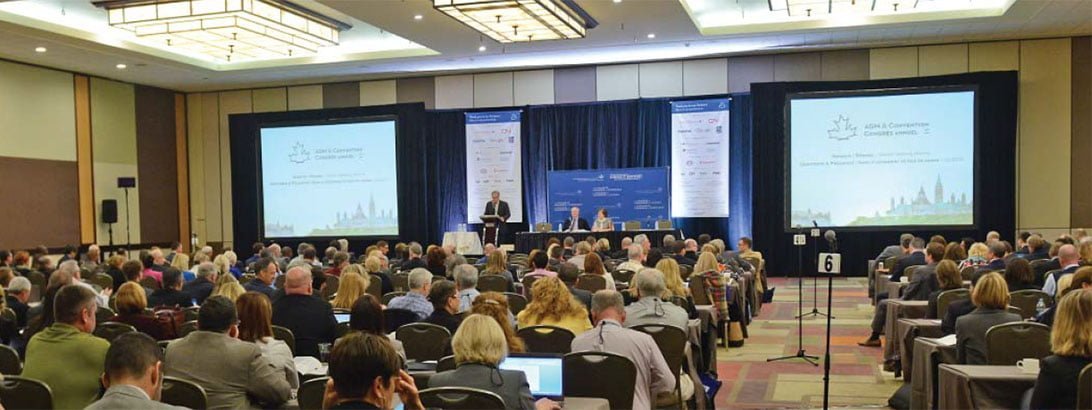



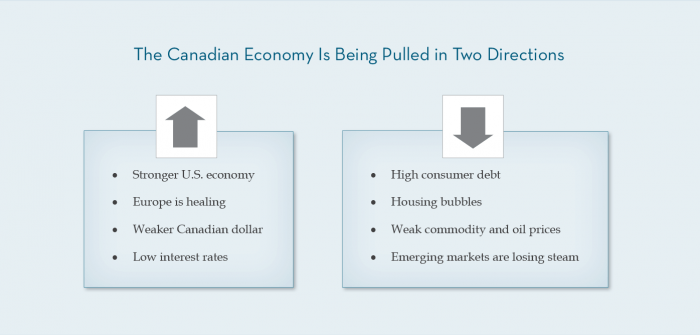


 Peter G. Hall
Peter G. Hall Barry Eichengreen
Barry Eichengreen Mark Zandi
Mark Zandi
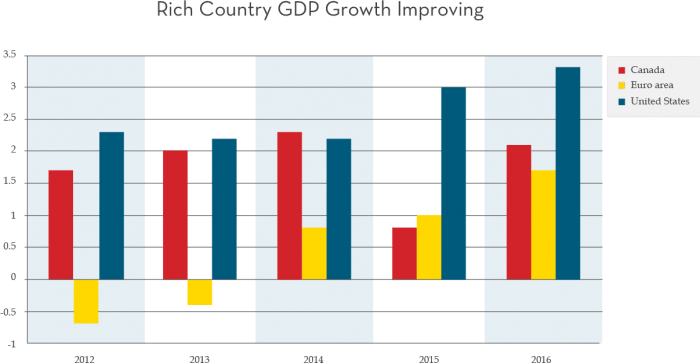
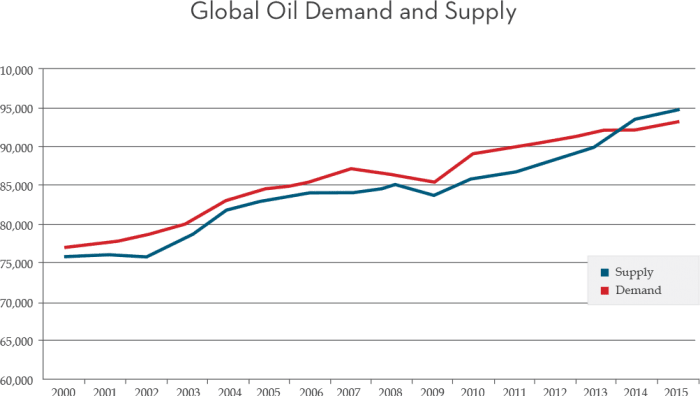





 Martin Ford
Martin Ford Robert R. Fowler, O.C.
Robert R. Fowler, O.C.



